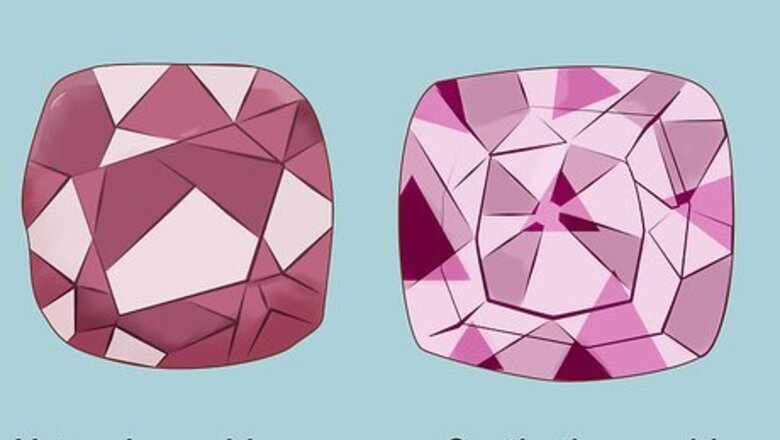
views
X
Research source
Examining the Stone
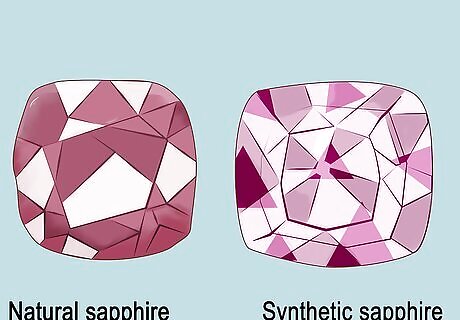
Assess the quality of the sapphire. Perhaps the easiest way to tell the difference between a natural sapphire and a synthetic sapphire is to look at the overall quality of the gemstone. A synthetic sapphire should be nearly perfect. Natural sapphires typically have flaws because while growing they were exposed to the elements. Since synthetic or lab-created sapphires grew in a controlled environment, they are more likely to be flawless or near-flawless. A near-flawless natural sapphire would command a significant price regardless of the size. Synthetic sapphires typically will be more affordable, better quality gemstones.

Evaluate the size and cut. Natural pink sapphires are rare, and are cut differently from other gemstones. Jewelers typically cut stones to calibrated sizes (one carat, two carats, and so on), but pink sapphires over a half carat are cut to accentuate the stone rather than to a specific weight. Stones larger than a carat typically are more likely to be synthetic stones, especially if they cost less than a natural stone of that size would cost. Most natural sapphires are cut using a mixed cut, rather than cut to specific shapes like other natural stones.
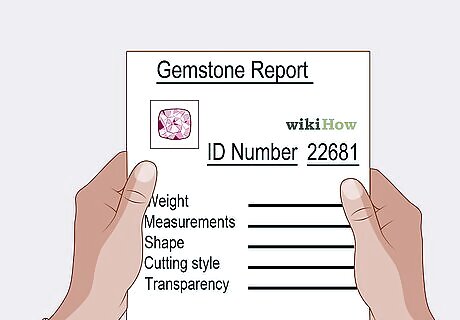
Look at the gemstone report. If the pink sapphire is real, it will have a gemstone report that details the origin of the stone and any treatments that have been done to it. Check watermarks for proof of the authenticity of the report. Pink sapphires may be heat-treated to bring out their natural color. Some people don't consider treated gemstones to be "natural," and if the gemstone has been treated in any way this must be disclosed on the gemstone report. The report should have an ID or reference number on it. Call the company that issued the report and give them the reference number to confirm the report's validity.
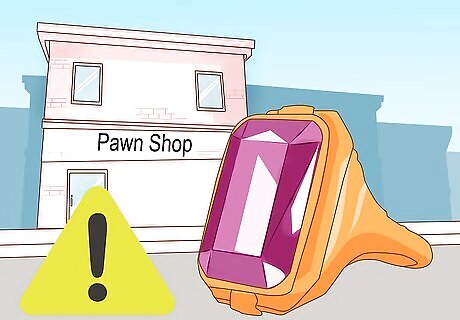
Consider external factors. How a pink sapphire comes to your attention may provide clues as to whether it's real. Think about how trustworthy the person is who introduced you to the sapphire, as well as their background and expertise. If you're looking at a pink sapphire at an established jewelry store, you can be fairly confident that it is what they say it is. However, be cautious with less reputable dealers. Pawn shops may incorrectly label a synthetic sapphire as a natural sapphire, since it can be difficult to tell them apart. Pawn shops also typically sell gemstones "as is" and make no guarantees about their authenticity.
Getting Professional Testing

Take the stone to an independent gemstone laboratory. Especially if the pink sapphire is a significant purchase, get it independently certified with a fresh gemstone report. The laboratory will examine the sapphire to determine whether it's natural. An independent gemstone certification typically will cost you a few hundred dollars. If the gemstone report you get conflicts with any other reports you have, you may want to get a third or even fourth opinion, particularly if the stone represents a significant investment.
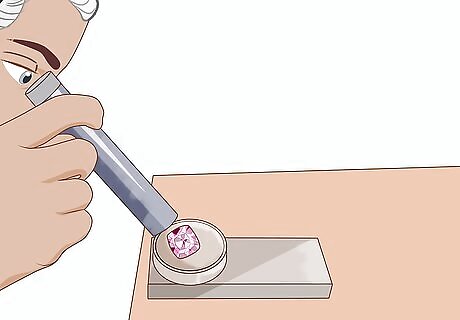
Request a spectroscope test. The spectroscope uses fiber-optic lighting to reveal details about the color of the stone that can indicate if the pink sapphire is synthetic or natural. Certain color flaws or differentiations are created by the interaction between the natural stone and other minerals in the earth, such as iron. Synthetic sapphires typically have coloring agents that will appear bright and shiny under fiber-optic lighting compared to natural sapphires.
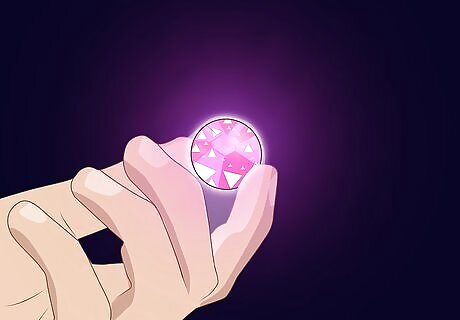
Check the stone's fluorescence. Some gemstone laboratories use a complex system that detects the stone's emission of X-ray fluorescence. This advanced testing method can be used to distinguish synthetic and natural gems. Use of this system also can identify trace minerals and elements in a natural stone, which could help pinpoint where the stone was mined.

Have the stone tested under UV light. A UV test can help identify the geographic origin of a natural pink sapphire, and also can help detect whether the sapphire is synthetic. UV tests also reveal whether the stone has been treated or enhanced.

















Comments
0 comment